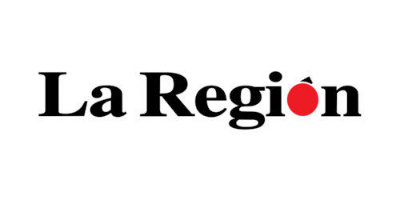To measure the impact that real politics has on a city, it is enough to compare the evolution taken in the last decade by Vigo and Ourense. The development of both intermodal stations, with their scandalous differences, exemplifies the extent to which it influences having politicians who assert themselves with courage in the face of any partisan interest or, on the contrary, suffer from a kind of timid non-leaders who are experts in splashing between shipwrecks. And that is why Vialia was inaugurated on September 30 within the gleaming design of Thom Mayne while the capital of Ourense will receive the AVE in an emaciated train station, with no date for its reform and with a bus terminal that does not exceed the qualification of sad stopping point with spacious docks.
It causes healthy envy to visit the modern bus terminal in Santiago or to reflect on how Vigo, without having a date for the arrival of the High Speed, has overcome the intrinsic obstacles to a work of more than 200 million euros, adding the involvement of three administrations -Concello , Xunta and Adif- of different political color: the result meets the objective of intermodality while moving the economy, recovering public space and solving urban problems thinking about tomorrow. Any resemblance to what Ourense suffered is a coincidence. Because the earthquake of Operation Pokemon, the change in La Moncloa and the economic wounds ended Norman Foster’s original plan and from there, the different political cycles and alternations have only come to draw the painful historical neglect suffered by this province and the no interest of the Ourense deputies of the PP and PSOE to claim their land beyond the clichés of each electoral campaign. It is a fact that we are still very far from effective territorial policies, but these unfair dynamics cannot divert the focus today: if the people of Ourense have learned something in recent years, it is that it is an illusion to wait for an external rescue if politicians in your local sphere they have already resigned before any kind of common defense of strategic projects. The drift of the intermodal portrays how we have gotten here, with a completely sterile carousel, the former mayor Jesús Vázquez trying to defend the indefensible, councilors alternating positions according to their survival instinct and the current councilor giving unusual swings -to ask for a station of “100 million” to say that he did not mind giving it up in exchange for the direct connection with Vigo-. Ultimately, what to expect from politicians unable even to process the donation of a 120-seat nursing home.
Gonzalo Pérez Jácome now suffers from the mud he created and from which he fed for so long. But unfortunately the problem is already spreading to the government group and the opposition. This feeling of having hit rock bottom permeates the bones of a city that seems to be dwindling day by day in the face of the vitality of other municipalities. Most social actors are surprisingly mute in a city that went from disenchantment to resignation, and from there to drowsiness. Murcia, for example, achieved with protests the burial of the AVE to avoid the isolation of the southern neighborhoods of the city while Ourense saw how its patience has only been the prelude to more delays and non-compliance. After so many historical headlines and grandiose adjectives about what was to be the “great central station of Galicia”, reality has left a shaved project, full of lost opportunities in the economic and urban plan – to the dividing scar of A Ponte and Or Vinteún will be joined by a wall on Avenida de Marín- and that borders on a lack of ambition in the face of the repowering of Ourense on the railway map.
In 2010, this newspaper titled an informative conference on the AVE, stating “Ourense is still looking for its new station.” Eleven years later, he still hasn’t found it. Nor to leaders capable of taking the city into the future.
– .


